3600 dpi scan - 36 sec,
7200 dpi scan - 113 sec.
This site is a free online resource that strives to offer helpful content and comparison features to its visitors. Please be advised that the operator of this site accepts advertising compensation from certain companies that appear on the site, and such compensation impacts the location and order in which the companies (and/or their products) are presented, and in some cases may also impact the scoring that is assigned to them. The scoring that appears on this site is determined by the site operator in its sole discretion, and should NOT be relied upon for accuracy purposes. In fact, Company/product listings on this page DO NOT imply endorsement by the site operator. Except as expressly set forth in our Terms of Use, all representations and warranties regarding the information presented on this page are disclaimed. The information which appears on this site is subject to change at any time. More info
PLUSTEK OpticFilm
Relive the Memories
The social networks nowadays are filled with selfies, food snapshots, cute kids and animals photos. But less than 15 years ago, people were still actively taking photos with the film cameras. When stored in a proper way, the slides can survive for many years, retaining their image quality and colors. But eventually, they will bleach out or just break to pieces anyway. In order to save your memories captured on 35mm film, we readily recommend this Plustek OpticFilm scanner. Although this professional converter has great technical specs and options, it is still relatively easy-to-use. So, even if you have never worked with a scanner before, you will manage its handling. Just turn it on, put the film in the holder and put them in the feeder.
Speaking of the body, it weighs only 3.5 lbs and is shipped in the set with a wonderful soft carrying case that comes especially handy for when you have to scan the slides elsewhere.
Inside the Plustek scanner body, the slide is illuminated with a cold LED light. Therefore, it won't ruin the slide like this might happen with common office scanners that use hot lamps. Note, this scanner works with only 35mm slides and films. Just like in other models, you manually move the holder to get the perfect frame position without the need to process it in the editor further on. Speaking of it, the scanner comes with an IT8 target for color calibration, that comes useful for quick color and white balance adjustments for the most accurate results.
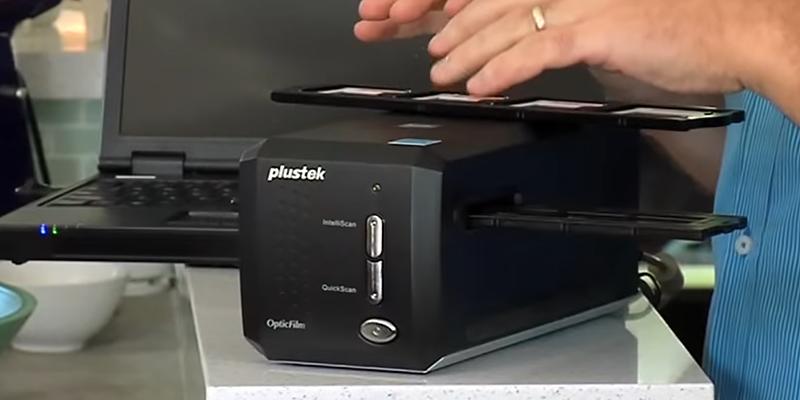
When Size Matters
We couldn't help mentioning the scanner's software. The device comes with a disk that has a couple of programs, compatible with Windows and Mac OSes. The first one is called QuickScan. Basically, it is used for making copies of the slides in just a few seconds. The resulting file has a small resolution, therefore, it's more appropriate for the recently made, good quality film.
The second program is SilverFast Ai Studio 8 for professional film scanning. It can even quickly process and save images in 64bit HDRi RAW format for professional use. The maximum resolution of the copy is 7200 dpi. This is approximately equal to a photo, taken with a 70 MP camera, which is really huge. Just for reference, iPhone 7 has a 12 MP camera. Thus, SilverFast is a perfect tool if you want to restore old archive photos from the negatives. Generally, the 3600 dpi is enough for standard scans, though. Anyway, the 7200 dpi will be suitable for getting detailed scans of architecture masterpieces or similar subjects with countless tiny parts and elements that might be blurred out with some other scanners.
Even more, SilverLight has a variety of configurable options for the full or partial color correction, image noise and grains reduction. The icing on the cake is the support of the special iSDR technology that can automatically and instantly fix such things like small fissures and scratches on the film, fingerprints, dust, and other things. This was made possible owing to the scanning technology in Infra-Red light.

Who Would We Recommend It?
First of all, librarians and catalogers will love the fact that the scanner's lamp does not warm the film up, so it won't get damaged, while the old slides are inside the scanner. Also, the digitalized pictures can be saved in image files with incredibly high resolution, that will show all of the smallest details of the original film.
Additionally, Plustek OPTICFILM 8200ISE can be a great buy for both professional retouchers and photo enthusiasts who love taking photos with 35mm film cameras. With it, they will be able to protect and preserve the precious memories, captured on the fragile layers of plastic.
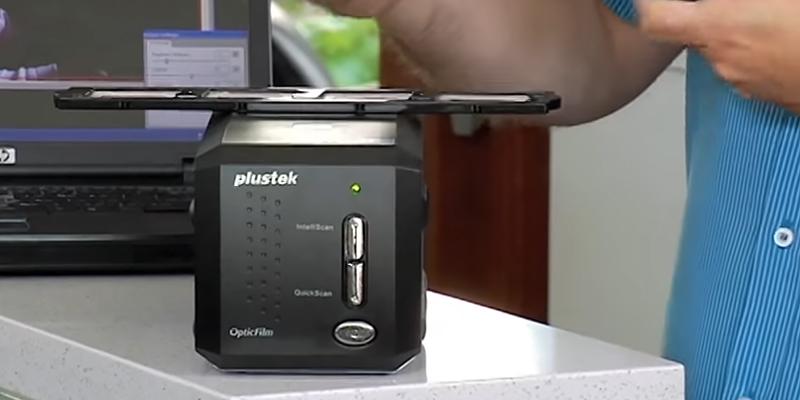
Additional Info
| Last updated price | $499.00 |
| Stock | In stock |
| ASIN | B009724JZY |
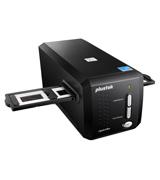
Wolverine F2DMIGHTY
Total Recall
Despite having a bit old-fashioned design, this Wolverine slide scanner can give you a helping hand in saving your old dear slides. There are several major features that make it so great. First of all, it works with different film formats. It comes with adapters for 8mm and super8 film reels, 110, 135, 127, 126KPK slides and negative strips. The whole process is very straightforward: you just set the film in the plastic adapter and feed it into the corresponding slot in the scanner's body. The 8mm and super8 reels go inside the front hole, everything else - into the slot to the right. Before taking a shot, you can check out the frame position on the 2.4" LCD screen. It seems, that the scanner uses a high-res camera for digitalizing the scanners. Thus, the colors might require additional color tuning in a photo editor. Especially, from the old slides that might already have changed their color with time.
The built-in memory storage can hold up to 40 scans. Also, there's an SD card slot on the back that supports up to 32 GB memory cards too.
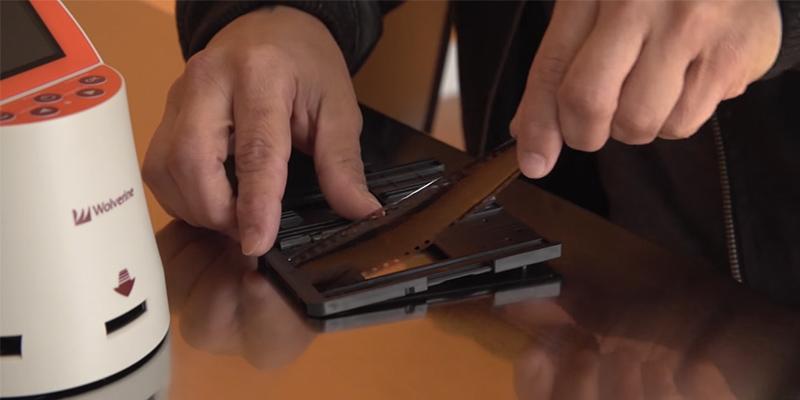
Full Control
The Wolverine F2D Mighty doesn't require any special programs or drivers on your PC, therefore, it's compatible with both Windows and Mac OS. The device is powered via a Mini-USB-to-USB cable (included) and comes with an AC-USB adaptor. Thus, you can either hook it up to a computer or a wall plug. In addition to the standard LCD screen, the device can be connected to a TV screen via a composite vide cable that can be bought separately. The buttons on the control panel are used for turning the device on-off, selecting a film size and format, save or delete images or upload them to an SD card.
As a result, we can recommend this film scanner to all photo enthusiasts who prefer working with different slide formats and want to share them quickly with friends and relatives online.
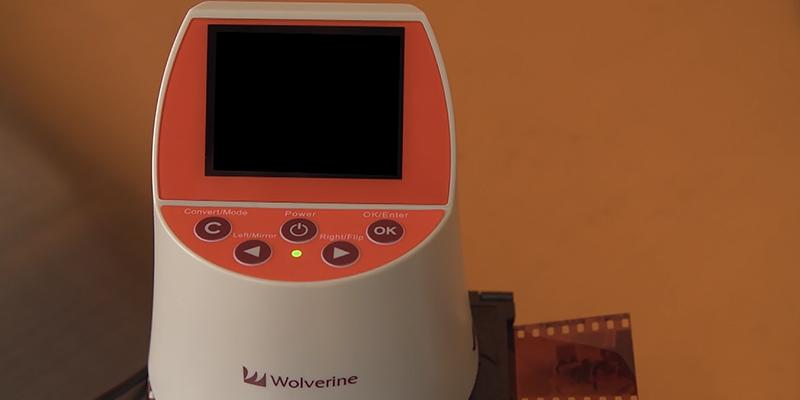
More Products to Consider
Memory cards are way more durable than slides or photos. However, even they may require protection, especially, during transportation. To protect such tiny things like SD cards, a lot of people worldwide use protective hard cases, that can be bought online.
Additional Info
| Last updated price | $0.00 |
| Stock | May be out of stock |
| ASIN | B00O46B7TY |
What customers say about this product
Features
Key Specs
Size & Weight
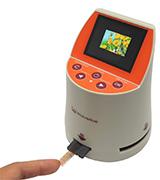
Jumbl JUM-FS14MP
Rolling Non-Stop
It's time for digging out the old boxes with film rolls and bringing them back to life. The Jumbl All-In-1 Film & Slide Scanner will help you digitalize any film type, thanks to the included adapters for slides of different sizes. Even if you feed the slide upside down, there's a handy mirror and flip buttons on top that do with the image exactly what they say. The result will be instantly shown on its 2.4" LCD screen. Really old slides might be dusty or even dirty. To fix this, you can use a thin foam brush that can clean the insides of the scanner. Just don't use it to clean the slides as they might get scratched.
The scanner is surprisingly easy to use. All of the key buttons are placed on top of the body, while all the options have big captioned icons. Therefore, even elderly people can figure out how to use it. With the included composite video cable, you can hook it up to the TV screen to see the bigger picture. Also, the scans are processed relatively fast. By pressing the scan button, the image is saved to either integrated storage or to the inserted SD card.
All-in-all, the Jumbl slide scanner is a solid and inexpensive choice for creating quick copies of large slide and film collections.

History of Photo
The history of the first photo can be traced back to the 19th century, when Joseph Niépce captured the image with the camera obscura on a thin paper, layered with the silver chloride. Anyhow, the mass production of the 35mm handheld photo cameras began in 1925 with the release of the Leica I model by Leica company. For many following years, the company has been holding the leading positions in the industry.
Another notable moment in photo history was in 1963, when the Polaroid introduced its instant camera that could develop the film in a matter of seconds, allowing more and more people to use a camera without the necessity of expensive film developing in photo laboratories or print shops.
Nowadays, people mostly use digital cameras instead of film rolls that become more and more expensive to develop. Thus, the demand for the slides and photo film is somewhat low. However, the film can capture the smallest object details with almost microscopic quality, while a digital sensor has a megapixel limit. Therefore, in terms of capturing the details, the fine grain film can still be superior to most of the digital photos. But to preserve the old negatives and slides, people need using some special devices like these film scanners.

More Products to Consider
If you have all of your negatives mixed together in one box or small plastic pockets and you are going to keep them after the scanning, you need to use either some binder or holding pages to store these slides appropriately.
| Last updated price | $0.00 |
| Stock | May be out of stock |
| ASIN | B00LU0XO3O |
What customers say about this product
Key Specs
Features
Size & Weight
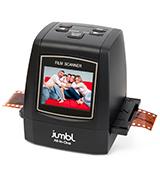
ClearClick QuickConvert
Fun and Easy Scanning
The ClearClick slide scanner is an excellent solution for getting digital copies of not only 35mm slides or negatives but for the printed photos as well. The scanner supports up to 5x7 photo format. For user's convenience, the package includes plastic aligners for 3.5x5, 4x6, and 5x7 sheets. As for the film, there are holders for negative strips and slides as well.
The photos are scanned with exactly the same technology like in a common scanner. Just place your photo face-down under the lid and press the button. On the other hand, the film is scanned by setting it in the included plastic holders that are put vertically in the slot on the side of the body. There's no auto-feed option so you need to align the frame manually. Fortunately, you can check the result on an LCD screen before taking a shot. Another way around is to connect the converter to a TV screen via the included composite video cable.
Also, we liked that the ports for Mini USB and TV-out are on the front side of the device for quick access. You can power it up from a wall plug, using the included AC adaptor, or connect it directly to the USB port on your computer.
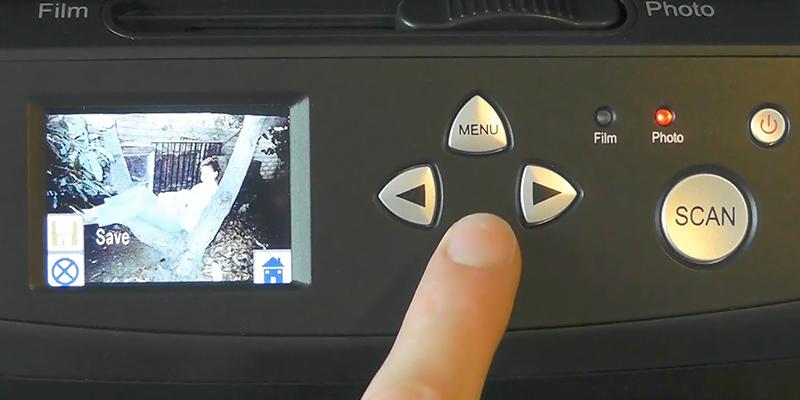
What's in the Box?
In addition to the film holders, the package includes an 8 GB SD memory card for storing the scans. The included thin brush can help you clean the dust from the insides of the scanner, reaching from each side of the slide slots.
The CD has a PhotoPad program for Mac OS and Windows. In it, you can edit your scans with such basic functions like cropping and quick color corrections. However, the scanner does not require the computer connection to operate. Thus, if your friend asks you to scan some of his or her old negatives collection, you can bring this device with you and get the digital copies right at their home.
Overall, the ClearClick Photo, Slide, Negatives Converter is a great investment for creating digital copies of a large scans collections. After that, you can use it as a small office scanner for up to A6 paper sheets.
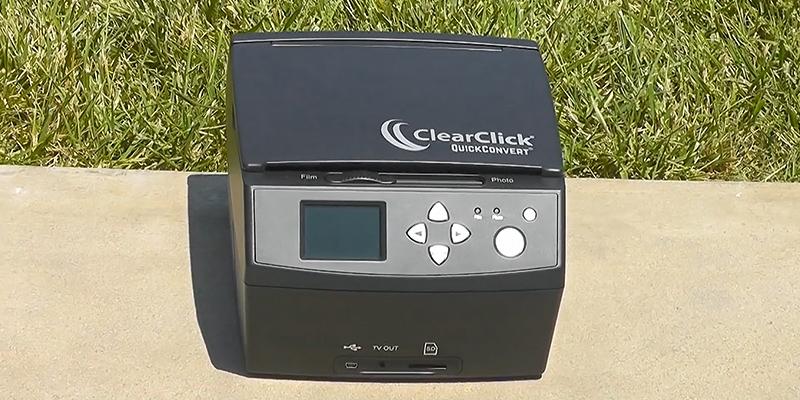
More Products to Consider
If by any chance you haven't got a micro SD card yet or you'd like to upgrade your old one and get a more capacious one, you can pick one from here.
Additional Info
| Last updated price | $0.00 |
| Stock | May be out of stock |
| ASIN | B01BJFE2OY |

ION Audio PICS2SD
Saving the Best Memories
The ION Pics 2 SD is an all-in-one device for getting digital copies of your favorite slides, negatives, and photos. Well, almost all. Keep in mind that the maximum compatible photo paper size is 5x7 and 35mm for the film. Seems like this model also "scans" the slides with a digital camera, resulting in a very fast processing. The frame position inside the scanner can be checked on the LCD screen placed on the top of the device.
Please note, the photos are scanned by setting them in one of the 3 included tablet-holders first. After that, the tablet is inserted into the device vertically from above into the special slot.
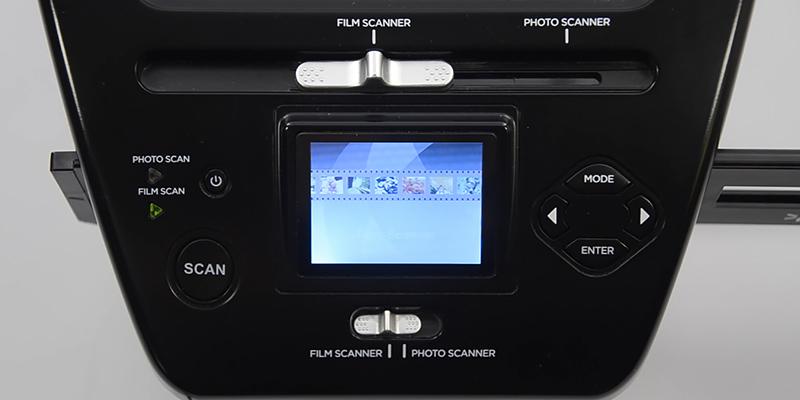
Additional Variability
Along with the LCD display, the control buttons are also placed on top of the housing. The included manual can be a bit confusing about some of the device functions. However, the controls are not complicated at all - choose the size, place the film, press the scan. Easy as that.
Another good news is that you don't need to install any drivers to work with this scanner. Actually, you don't need a computer at all. The device is powered via USB port and has a slot for SD cards. By the way, the manufacturer offers us to use this scanner as a card reader if your computer doesn't support this option, which may come in handy in many situations.
Overall, it is a solid multi-functional device that will quickly digitalize all of your slides, negative strips, and photos. Although it is a bit tall, it will surely take much less space than a big office scanner on your table at home or in the office.
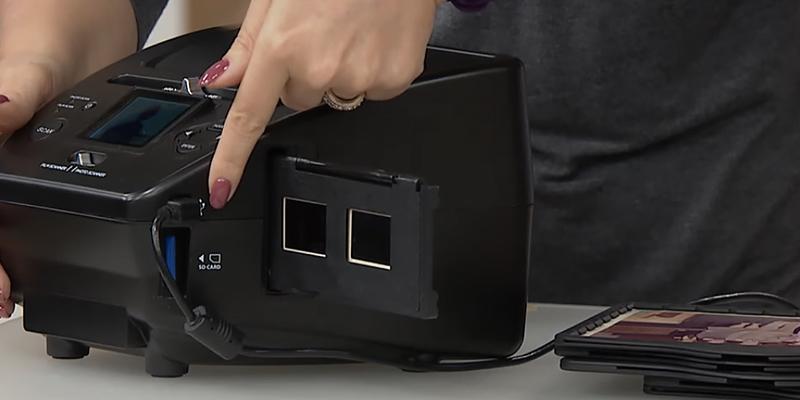
More Products to Consider
The film and photo restoration also requires a quality monitor with a reliable color calibration. Therefore, check out our review of the best monitors for photographers.
Additional Info
| Last updated price | $324.98 |
| Stock | In stock |
| ASIN | B0038WJXIM |

What is a Slide Scanner
In the digital age, we can easily snap a picture with our phone and upload it to any web source. But what about the old slides and printed photographs stored away in the attic, collecting dust? Is there a way to bring life in those pictures and share them with other people online? Well, there actually is, and it is a slide scanner, an electronic appliance used to convert all real photos to the digital format to keep on a computer or an SD card. The operation principle is pretty simple. You place a picture in the slot, wait a second until it takes its photo and then it is converted to a digital file. The digitized copies can be stored either on a flash card or written directly on the hard drive. Easy as that.
As a side note, the inkjet printers can provide you with quick copies from the scanned negatives. You can also buy a portable pico projector for showing off your digital photos collection to your friends and relatives.
What Features to Compare
Resolution. Simply put, this refers to how huge your digital copy of the film or the photo will appear on the computer screen. As a rule, the bigger it is, the more details will be seen on it. If you are going to further process the image in the graphic editor, you will require at the very least 1800 dpi resolution for 35mm film slides. However, even 5 MP will be enough if you just need to quickly scan a bunch of slides to store them further on your PC. 200-400 dpi will be enough for most programs to effectively recognize the printed text from the scanned slides.
Taking into account the Intended Use, you will be able to figure out what types of film formats and/or photo sizes exactly the scanner can process for you. Usually, the slide converters have either special slide adaptors or an adjustable tray for this. You need to make sure the chosen slide scanner is compatible with the films you've got at your disposal.
Scanning Speed is a pretty straightforward characteristic, too. If you are searching for a slide scanner to use in a little print shop, a quick scanning speed will considerably reduce a wait time for consumers in the line.
Additional Features may include a variety of things. For instance, some of the scanners come with a small screen for checking a slide position inside the scanner. Others might come together with a cable so that they could be connected to other appliances (TV screens, PC monitors, etc.). A lot of slide scanners offer versatility of use and can work not only with the film but also with photos, just like conventional PC scanners do.
Sources:
1. How to Pick a Great Slide and Photo Scanner, wikiHow.
2. Rebecca Lily Film vs. Digital, Digital Photography School.
3. Tips on Digital Photo Restoration, Cambridge in Colour.
4. Restore Your Old Photos, Pixelmator Team.
5. Rachel Gregg Fix Old Photos With This One Easy Photoshop Trick, CreativeLive. March 31, 2015.


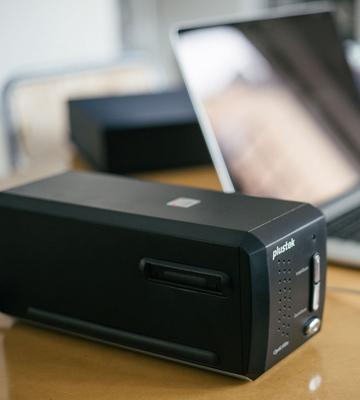
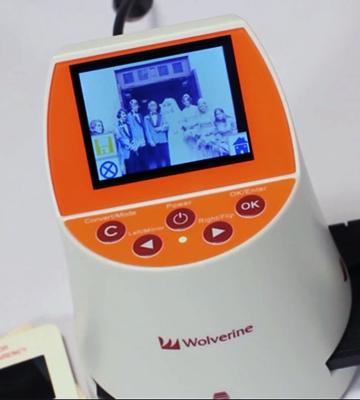
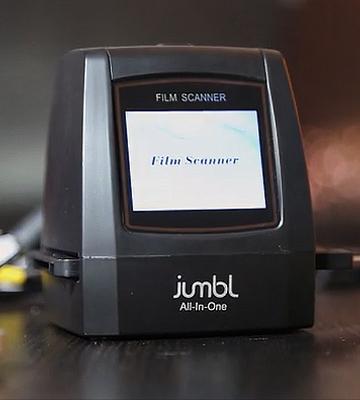



Your comment was successfully sent
Error! Please try again later